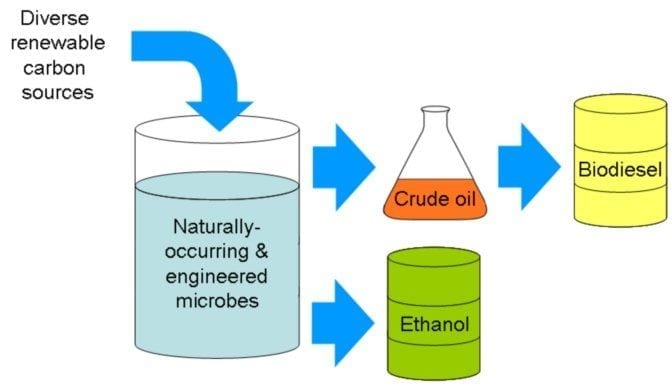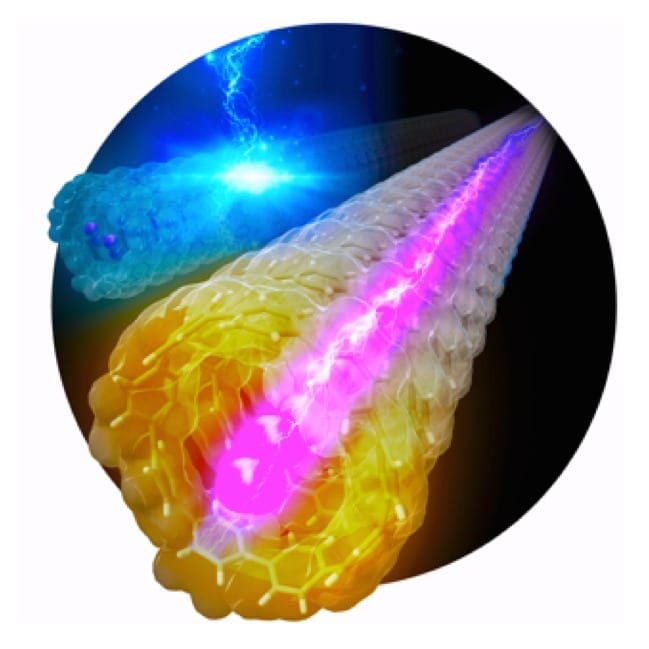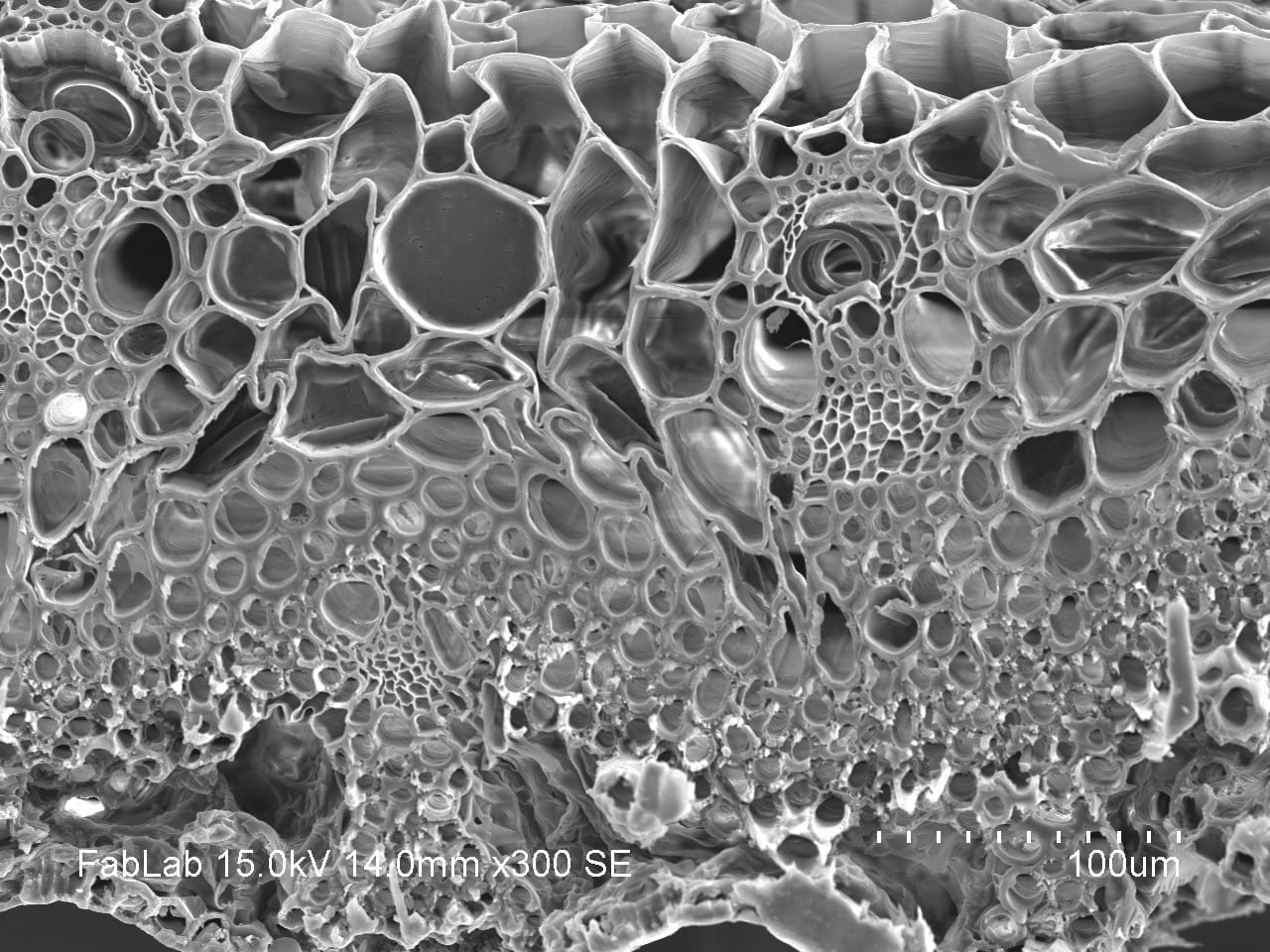
Washington State University researchers have developed a way to grow algae more efficiently — in days instead of weeks — and make the algae more viable for several industries, including biofuels.
Their work was reported in the journal Algal Research.
Environmental benefits
Researchers would like to produce algae efficiently because of its potential environmental benefits. Oil from the algae can be used as a petroleum alternative and algae also can be used as food, feed, fiber, fertilizer, pigments and pharmaceuticals. Growing and harvesting it in wastewater streams could also reduce the environmental footprint of many manufacturing processes.
But its use in industry hasn’t caught on primarily because it requires a lot of time and water to grow. Generally, large ponds are required, and harvesting is labor intensive. Researchers have begun developing biofilm reactors to grow the algae, but the reactors aren’t efficient because of pH or temperature variations or a limited supply of carbon dioxide gas.
Biofilm reactor

Led by graduate student Sandra Rincon and her advisor, Haluk Beyenal, professor in the Gene and Linda Voiland School of Chemical Engineering and Bioengineering, the researchers developed a unique biofilm reactor that recycles gasses and uses less water and lower light than typical reactors.
The algae produced was full of the fats that make it suitable for biodiesel production and “fatter” than other biofilm reactors have produced. Because of a removable membrane, it was also easier to harvest than typical systems.
The system is unique because it allows the algae to simultaneously do photosynthesis like a plant while also “eating” carbon and respiring like an animal, said Beyenal. The researchers fed the algae glycerol, a cheap waste product of biodiesel production, and urea, another inexpensive chemical that serves as a nitrogen source for the algae. The system’s design means that carbon dioxide and oxygen are recycled in the system.
“The cell, in fact, becomes a very efficient factory in which the nutrients are supplied by the medium, but the cell metabolism meets its carbon dioxide requirements internally,” said Rincon.
Patent application filed
Like many new research efforts, the project was challenging, said Beyenal. He credits Rincon with her sustained efforts in spite of several setbacks that might have led others to quit and give up on the work.
“The idea is new,” said Beyenal. “Sandra demonstrated that it worked at the lab scale.”
Learn more: Algae cultivation technique could advance biofuels
The Latest on: Algae farming
[google_news title=”” keyword=”algae farming” num_posts=”10″ blurb_length=”0″ show_thumb=”left”]- Deadline to enact Lake Erie's pollution diet now seton May 6, 2024 at 12:13 pm
Algae blooms in Lake Erie has tainted the water for years, causing issues for cities that use it for drinking water as well as the animals that call it home.
- Studies assess feasibility of aquaculture wastewater treatment methodson May 2, 2024 at 9:21 am
Aquaculture production operations that help feed the world's growing population also generate polluted wastewater that harms the environment. Four studies published by Purdue University scientists ...
- Biofertilizers Market to USD 6.81 Billion by 2030, Propelled by Global Shift Towards Sustainable Farming Practiceson May 2, 2024 at 6:35 am
Biofertilizers Market to USD 681 Billion by 2030 Propelled by Global Shift Towards Sustainable Farming Practices ...
- How kelp farms, an 'environmental powerhouse,' can help mitigate climate changeon May 2, 2024 at 5:26 am
Kelp, large brown algae or seaweeds that grow in shallow oceans ... Gobler said. Kelp from a kelp farm in Long Island, NY. A 1-acre kelp farm in the Moriches Bay can remove as much nitrogen as 20 ...
- Corals that recover from bleaching still struggle to breedon May 1, 2024 at 5:00 pm
Bleaching occurs when corals exposed to above-average ocean temperatures expel the symbiotic algae that live inside their tissues. These organisms give them their vibrant colours as well as ...
- Blue-green algae get a bad press – but we owe a debt of gratitudeon April 30, 2024 at 10:00 pm
But in nutrient-rich water, created by farm waste or sewage released into rivers and lakes, blue-green algae multiply fast, especially in warm sunshine. This is dangerous in still waters where they ...
- Is Algae Oil the New Fish Oil?on April 30, 2024 at 10:35 am
WHILE THE IDEA of algae oil sounds pretty gross to us ... but also presents a solution to the environmental concerns associated with overfishing and fish farming. Plus, “it tends to come with less of ...
- Everything You Need to Know About Algae Oilon April 30, 2024 at 10:35 am
“Algae oil can also have benefits for the skin,” says Zenker, citing this research. “Omega-3 fatty acids help maintain the skin's integrity, reduce the effects of aging, and may improve conditions ...
- Top 8 Best Red Algae Supplements in 2024on April 27, 2024 at 5:00 pm
The popularity of red algae-derived supplements is on the rise, thanks to the numerous potential health benefits they provide. Red algae, also known as Rhodophyta, fall under a group of seaweed ...
- Palmyra Township farm working with MSU to fight climate change by improving water quality, drainageon April 25, 2024 at 1:07 am
For nearly 160 years, the Isley family have cultivated Lenawee County soil. Now they are helping Michigan State University improve water quality and reduce toxic algae.
via Google News and Bing News










